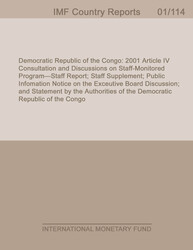
Italy: 2014 Article IV Consultation-Staff Report; Press Release; and Statement by the Executive Director for Italy
KEY ISSUESUnleashing Italy's PotentialThe economy is struggling to emerge from a prolonged balance-sheet recession… Tight credit conditions, weak corporate balance sheets, and deeply-rooted structural rigidities continue to weigh on domestic demand. The high level of public debt and membership in a currency union highlight the importance of tackling these structural weaknesses.…and the risks are tilted to the downside. External risks arise from geopolitical tensions, while Italy's high public debt, large public financing needs, and elevated NPLs leave the economy vulnerable to financial contagion and/or low growth and inflation. Without meaningful reforms, potential growth is projected to remain low.Deep structural changes are urgently needed to secure a recovery and unleash Italy's growth potential. Moving to a single labor contract with gradually increasing protection would reduce duality. Judicial efficiency could be improved by promoting mediation and enhancing monitoring of court performance. Greater efforts to combat corruption would strengthen the business environment. Implementing reforms simultaneously could be self- reinforcing and generate significant growth synergies.A greater push to clean up banks' bad loans is needed to support lending in the recovery. More provisioning and write-offs; a private distressed debt market; and enhanced insolvency regime would accelerate the reduction of NPLs. Improved corporate governance and deeper capital markets would support growth and financial stability.A broad strategy to revive the SME sector would complement efforts to strengthen bank balance sheets. This strategy should promote restructuring support for viable, but distressed firms and a quick exit for those that are non-viable. A new fiduciary loan contract and greater sharing of credit information could support alternative financing for new endeavors.Fiscal policy needs to strike a delicate balance between setting the debt ratio on a downward path while helping the economy recover. To support growth, the priority should be to lower marginal tax rates through spending savings and lower tax expenditures. But given the low growth and high interest rate environment, stronger fiscal balances are needed to bring down debt faster. Conditional on the recovery taking hold, a modest structural surplus next year would be appropriate.Policies at the European level could also support growth by easing further monetaryconditions should inflation remain too low, and reducing financial fragmentation.
Publication date: September 2014
ISBN: 9781498383516
$18.00
Add to Cart by clicking price of the language and format you'd like to purchase
Available Languages and Formats
| English |
Prices in red indicate formats that are not yet available but are forthcoming.
Topics covered in this book
This title contains information about the following subjects.
Click on a subject if you would like to see other titles with the same subjects.
Money and Monetary Policy , International - Economics , Public Policy ,
Also of interest
Summary
Copyright © 2010 - 2025
Powered by:
AIDC



